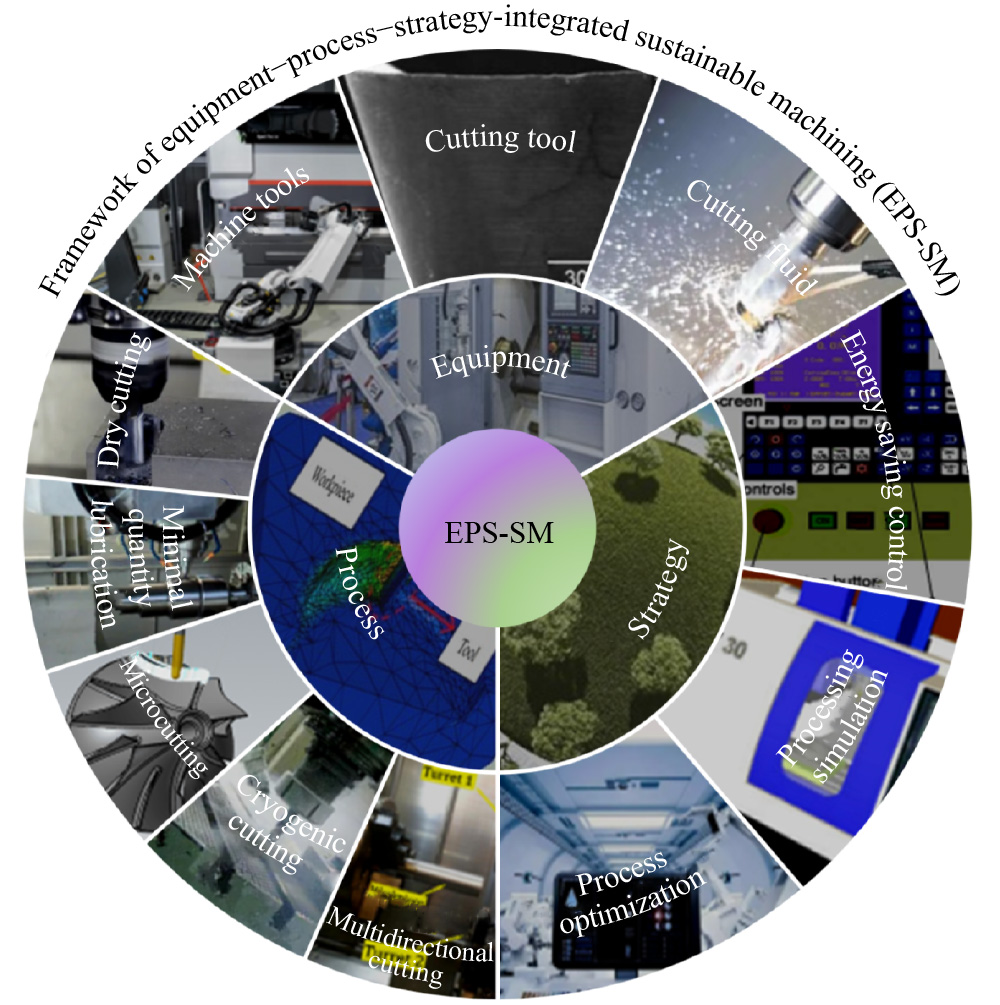First, cryogenic cutting has more advantages than traditional dry and wet machining [
97,
98]. In contrast to dry cutting, the increase in cutting force in cryogenic cutting under low-temperature compressed air is smaller after long-distance cutting [
99]. Finite element simulations and experiments of dry and liquid nitrogen cryogenic cutting processes proved that liquid nitrogen could significantly reduce cutting temperatures [
100]. Second, cryogenic cutting can not only improve the machinability of materials but also improve the service life of tools [
101–
103]. After low-temperature treatment, such as low-temperature liquid nitrogen or liquid carbon dioxide treatment, coated tools can replace the traditional cemented carbide tool [
104,
105]. In addition, cryogenic cutting can improve chip fragmentation [
106] while reducing processing costs [
107]. Fig.9 [
108–
110] shows a comparison of the chip morphology and tool wear under dry and liquid nitrogen cooling conditions. Third, in an experimental study on the milling process of AISI 304 stainless steel, low-temperature cooling somewhat influenced the cutting force [
111]. Research has shown that different cutting parameters have varying effects regardless of whether they are in the same cooling medium [
112]. For example, a mechanical processing test of hardened steel showed that the effectiveness of low-temperature coolant to improve the machinability of the steel was dependent on the cutting parameters [
113]. Therefore, appropriate cooling media and parameters should be selected for different conditions. Under the combination of high-feed speed and low-cutting depth, the use of low-temperature liquid nitrogen can maximize the tool life [
114]. Research on the end milling of Al 6082-T6 alloys showed that the cooling effect of low-temperature liquid nitrogen is better than that of low-temperature CO
2, but the machined surface quality is reduced [
109]. The processing of titanium alloy Ti‒6Al‒4V is a challenging task. Compared with low-temperature liquid nitrogen processing, the application of CO
2 can reduce the cutting force by 24% and improve the surface finish by 48% [
115]. When TiAlN-coated tools were used to end-mill a SKT4 die steel, the surface of the die steel cooled by low-temperature CO
2 had a better surface morphology than that cooled by wet cooling [
116]. Finally, the working form of the cooling medium can also greatly influence the cooling effect. For example, a special low-temperature cooling system was used to apply a liquid nitrogen jet to the cutting area, and a better cooling effect and machining efficiency were eventually obtained [
117]. An investigation on the turning process of AISI 304 stainless steel showed that low-temperature cooling with liquid nitrogen spraying is conducive to improving the surface roughness of a workpiece [
118].















